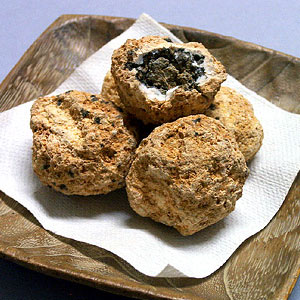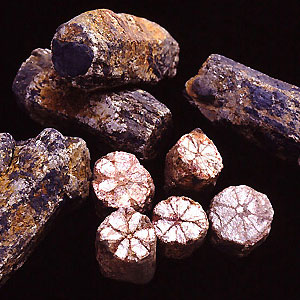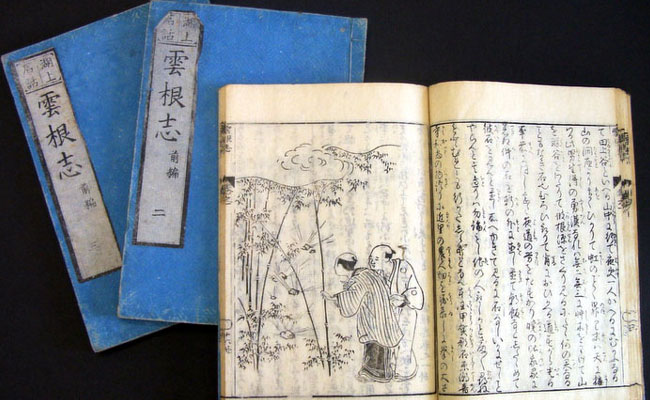What is Kiseki?
Among various kinds of museums in Japan not so many are specialized in rocks, minerals and fossils. Many people say, “I am interested in animals and plants, but stones…I’m not sure. Maybe gemstones, a little.” We understand that natural feeling. |
|
I suppose not many people have heard the word “Kiseki”. I myself had never heard of the word before I started to work for this museum. |
|
In Edo period, strange-shaped stones and unusual looking stones were called “Kiseki”. For example, stones resembling “manju (Japanese steamed bean-jam bun)” was called “Manju-stone”, and stones that look like cherry blossom was called “Cherry-blossom stone” (see pictures below). These unusual stones were called “Kiseki”. |
|
 |
 |
Around the middle of Edo period, a group of stone lovers formed a society called “Kiseki Society”. There, members brought strange stones to show to the other members and see who’s stone was the strangest. Our museum’s name derives from this Kiseki Society. We always make efforts to become the one and only unique museum. |
|
The main member of the Kiseki Society was Sekitei Kinouchi (1724 ~ 1808). He was born in Oumi (today’s Shiga prefecture), and began collecting stones when he was about 11 years old. He had collected stones from all parts of Japan for about 70 years until his death at the age of 85. The total number of the stones he had collected in his lifetime is said to be about 2000. By foot or on horseback, he had traveled all over Japan. We can imagine it was some hard way. (I feel ashamed of using car to go on a shopping to the convenience store located 5 minutes walk from my home!) |
|
Sekitei had written “ Unkonshi”, the first technical book in Japan on stones (see the picture below). In this book he introduces interesting stones such as Manju Stone, Long-nosed Goblin’s Nail and Stone Swallow with each stones’ production condition. The stones are classified by categories like “ stones associated with foods”, “stones associated with animals”, and so on. Sekitei’s way of classifying stones by physical appearance is different from that of modern mineralogy and petrology, but we believe that everyone will feel sympathy for his simple idea. |
|
 |
|
On the basis of this attractive viewpoint of “Kiseki”, the Kiseki Museum of World Stones was established in 1971, as the first museum in Japan specializing in stones to introduce unfamiliar world of minerals and earth science to the public. |
|
Exhibits in our museum are mainly based on above-mentioned classification, which is “classification by physical appearance”. For detail, please take a look at Permanent Exhibition. |
|
*Ancient Chinese word ”Unkon” in the word “Unkonshi” means stone. In ancient times people thought that stone was made from clouds because water drops are made when cold stone is expose to moist air. |
|
The mineral “unmo (mica)” also has the word “un” in its name. It was named so because mica was thought to be mother body (“mo”) of clouds (“un”). |
|
